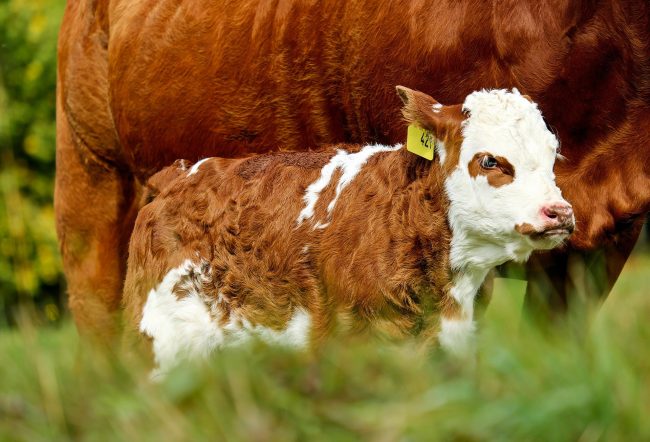Home » Agriculture – Ryan Sterry, Regional Dairy Educator, Northwest Wisconsin
Agriculture – Ryan Sterry, Regional Dairy Educator, Northwest Wisconsin

Cold Weather and Calf Care
Written by: Ryan Sterry, Regional Dairy Educator and Reviewed by: Tina Kohlman
Winter weather brings new challenges for completing chores on the farm. Calf care is no exception. Calves perform best when we acknowledge their needs change in colder weather and adjust our management accordingly.
Pre-weaned calves can be more sensitive to cold temperatures than adult cattle. The thermal neutral zone ins defined as the temperature at which animals are most comfortable and do not require extra energy to maintain their normal body temperature. A newborn calf maintains its core body temperature from 50 degrees F to 77 degrees F, while a on-month-old calf’s thermoneutral zone is 32 degrees F to 73 degrees F. When environmental temperatures are outside this zone, calves will use additional energy to maintain their body temperature. Follow this link for a few good reminders for calf care practices to implement this winter . . .Cold Weather Calf Care
December Dairy E Newsletter
In a recent Extension webinar, Leonard Polzin, Extension Dairy Markets Outreach Specialist, shared his insights for the 2023 Dairy Margin Coverage Program. Enrollment remains open until December 9th, 2022, for interested producers. A recording of Mr. Polzin’s presentation is available at: https://youtu.be/371b2P4GkqE. For those not familiar with the program, DMC is a voluntary risk management program provided by the U.S. Department of Agriculture (USDA) and is available to dairy producers. This program helps producers manage risks associated with changing milk and feed prices. The margin protection program utilizes the All-Milk price less a ration cost to produce 100 pounds of milk. DMC ensures a producer-selected margin amount, thus providing milk price and feed price risk management.
For the full newsletter article, please visit this page: December Dairy E Newsletter
Fact Sheet for Pricing Standing Corn Silage
A factsheet updating corn silage pricing guidelines for the 2022 harvest season. Our goal is to provide educational resources for both buyers and sellers to negotiate a mutually agreeable price based upon market conditions and crop yield.
Historically, formulas based on corn plant height and corn grain yield have been used to estimate silage yield. Current data using these methods on modern hybrids is lacking, making the accuracy of these methods unknown.
For more information, visit the UW-Madison Division of Extension Corn Silage Aid webpage: https://cropsandsoils.extension.wisc.edu/articles/tools-for-pricing -standing-corn-silage/.
If you would like a copy of the Fact Sheet, click here: Buying Selling CS 7-18-2022 FINAL
Barron County UW-Extension Office
Barron County Government Center
335 East Monroe Avenue, Room 2206
Barron, WI 54812
Contact: Ryan Sterry, Regional Dairy Educator
Phone: (715) 531-1950
Email: ryan.sterry@wis.edu




